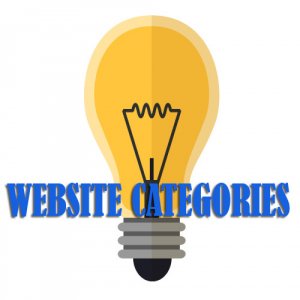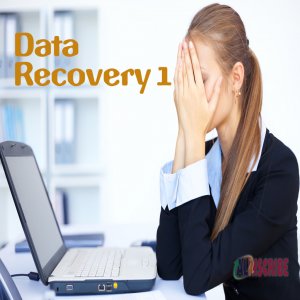What Is ERPNext? Features, Pricing, Pros And Cons – Everything You Need To Know
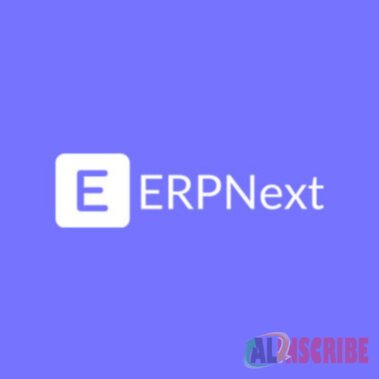
In our ERP and CRM series, we have ERPNext next in the line. ERPNext is considered to be one of the most successful ERPs in the world. There are various reasons why ERPNext rose to its current popularity. In today's dynamic business landscape, efficient management is crucial for success. Enterprise Resource Planning (ERP) systems play a pivotal role in centralizing operations and providing a holistic view of a business. Among the various ERP solutions available, ERPNext stands out as a powerful open-source alternative.
This article delves into "What is ERPNext?", offering a comprehensive guide to its core features, pricing models, and an unbiased look at its pros and cons. Whether you're a small startup or a growing enterprise, understanding ERPNext can help you make an informed decision for streamlining your business processes.
What is ERPNext?
If we go back to the history for a while then, ERPNext was first developed in the year of 2008 as an accounting management software. However, the growth in its popularity has turned it into today’s ERPNext, one of the most sought out ERPs in the world.
And now, ERPNext is a free and open-source ERP software designed to help businesses manage their core operations. Developed by Frappe Technologies, it offers a comprehensive suite of tools for various departments, integrating them into a single system.
Key modules include accounting, inventory management, sales (CRM), purchasing, manufacturing, project management, human resources (HR), and even a website builder. This integrated approach eliminates data silos and improves efficiency by providing a unified view of business processes.
Being open-source, ERPNext offers significant benefits like no licensing fees, extensive customization options, and strong community support. It's built on the Frappe framework using Python and JavaScript, making it flexible and scalable for businesses of all sizes, from small startups to larger enterprises. Its user-friendly interface and cloud-ready architecture contribute to its widespread adoption.
Let’s dive deeper into the features ERPNext, to understand why it can be the best match for your business.
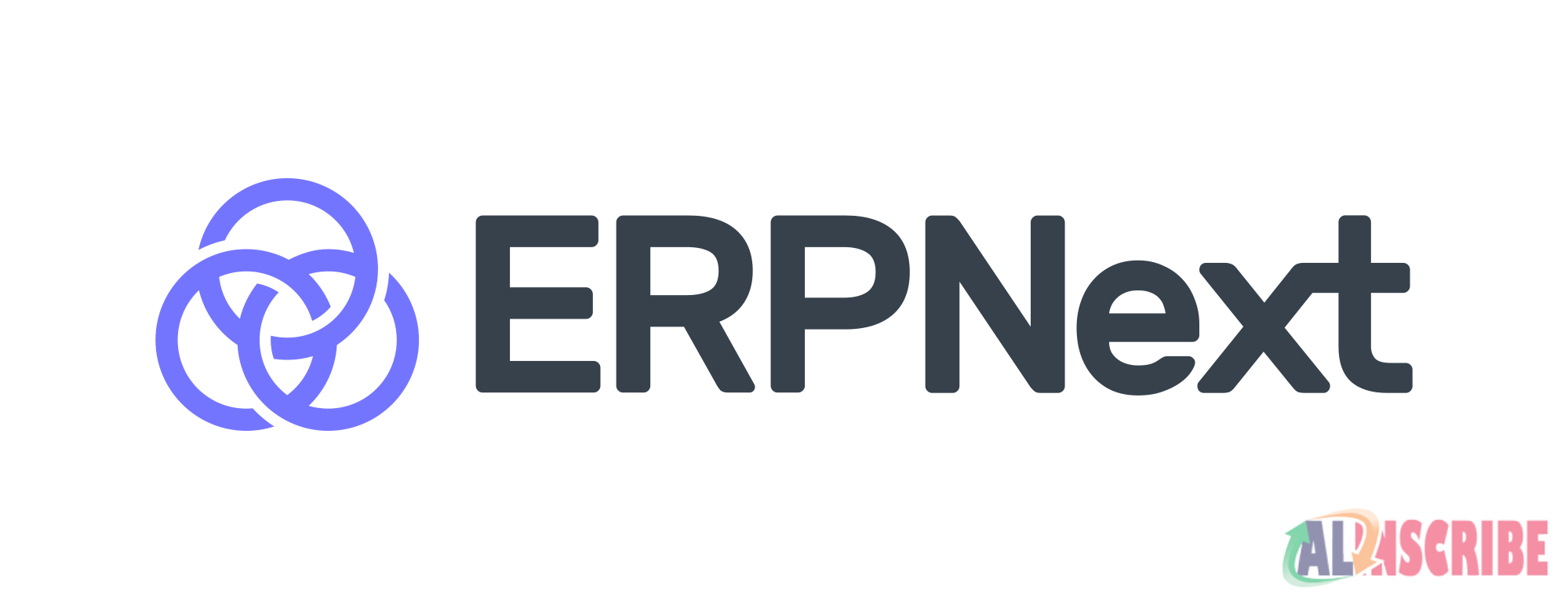
Core features of ERPNext
ERPNext has a set of comprehensive features that are capable of taking care of the most important operations of a business. Be it a small start-up or a large corporation, ERPNext’s features are scalable enough to support almost everything. While we are at topic, why not know more about the core features of the software. Without further ado, let’s get into it.
1. Accounting / Financial management
As stated before, ERPNext started its journey as an accounting software. Hence, it is only given that accounting would be one of the strongest of its fronts. ERPNext supports several currencies, making it one of the best choices for the multinational companies or companies with a global client base.
The financial management module that ERPNext boasts include all the key accounting features and functions that a company might need, such as taxes, budgeting, accounts payable and receivable, general ledger, financial reporting and so on. According to the existent users, ERPNext is known for taking an extensive approach towards supporting all the crucial features for accounting or financial management.
The robust accounting engine that the software possesses makes double entry bookkeeping an east feat. The software also goes an extra mile by simplifying compliance. One of the examples of the same is automated tax filing. Thus, if your organization is looking for a system with an integrated financial management, ERPNext is the right choice for you.
2. Inventory management
The second strongest feature of ERPNext is inventory management. Just like financial management, inventory management, too, covers all the key features giving the users an ultimate package to manage their businesses with. The primary modules associated with the inventory management feature are: warehouse management, inventory management, inventory reporting, stock transfer and so on. There are also features like batch/serial number tracking, quality inspections and expiration date management.
One of the best attributes of ERPNext is that it allows the users to optimize stock planning in order to reduce carrying costs. This makes ERPNext one of the most loved ERP systems by manufacturing enterprises.
3. Sales and Customer Management
Next in the line we have sales and customer management features. These features are a compilation of whatever sales related can arise in an organization. Starting from sales forecasts, lead management, to sales analytics and customer accounts, you will find almost everything in ERPNext.
The software is a great help to the sales teams as it offers ultimate support in the shape of effective sales and customer management features. What is even more amazing is that ERPNext allows the users to automate lead scoring and sales pipeline tracking, which increases target visibilities, resulting in an enhanced performance.
According to existent users, ERPNext is known to have more sales functionalities than other available ERPs in the market. Hence, if you want a system that can help you with your sales funnel, ERPNext is the one for you.
4. Human Resource Management
ERPNext's Human Resource Management (HRM) module offers a comprehensive suite of features designed to streamline HR operations and enhance workforce efficiency. At its core, it provides a centralized employee database, maintaining detailed records including personal information, job history, qualifications, and performance reviews. This eliminates disparate systems and ensures data consistency.
Key functionalities include robust recruitment and onboarding tools, allowing businesses to manage job openings, track applicants through various stages, and automate onboarding tasks like document collection and training schedules. Attendance and leave management are simplified through automated tracking, integration with biometric devices, and streamlined request and approval workflows.
The payroll processing feature is highly automated, handling salary calculations, deductions, and tax compliance based on predefined structures and local regulations. Furthermore, ERPNext's HRM supports performance management, enabling goal setting, performance appraisals, and continuous feedback. An employee self-service portal empowers employees to manage their profiles, view payslips, and apply for leave, reducing administrative burden on HR.
By integrating seamlessly with other ERPNext modules like accounting and projects, the HR module provides a holistic view of operations, fostering better decision-making and improved overall efficiency for businesses of all sizes.
5. Procurement and Supplier Management
ERPNext's Procurement and Supplier Management module is a critical component for businesses seeking to optimize their supply chain and control costs. It provides an end-to-end solution for all buying activities, from initial material requisitions to supplier payments.
The module facilitates efficient material request and requisition processes, allowing various departments to formally request items. These requests can then be consolidated and used to generate Requests for Quotation (RFQs), which are sent to multiple suppliers to solicit competitive bids. ERPNext simplifies the comparison of supplier quotations, enabling users to choose the best option based on price, delivery terms, and quality.
Once a supplier is selected, Purchase Orders (POs) can be generated directly from the approved requisitions or quotations, reducing manual data entry and errors. The system tracks the status of POs, from creation to receipt of goods, ensuring timely deliveries. Upon receipt, Purchase Receipts are recorded, automatically updating inventory levels. Finally, Purchase Invoices are processed and linked to the accounting module for seamless financial reconciliation and payment processing.
Supplier management is a core strength, with features for maintaining detailed supplier records, including contact information, payment terms, and performance metrics. ERPNext also offers a Supplier Portal, empowering suppliers to submit quotes, view purchase orders, and raise invoices directly, fostering greater collaboration and transparency. This comprehensive approach helps businesses build strong supplier relationships, mitigate risks, and make data-driven procurement decisions.
6. Production and Manufacturing Management
ERPNext's Production and Manufacturing module provides a robust framework for managing the entire manufacturing lifecycle, from planning to final product dispatch. At its core is the Bill of Materials (BOM), which meticulously defines all raw materials, sub-assemblies, and operations required to produce a finished item. This multi-level BOM ensures accurate costing and a clear understanding of the production process.
The module facilitates comprehensive production planning, enabling businesses to create schedules based on sales orders, forecasts, and available resources. It helps in optimizing production runs by considering machine availability, labour capacity, and material lead times. Once a production plan is established, Work Orders are generated, serving as detailed instructions for the manufacturing team, outlining tasks, quantities, and timelines.
Job Cards are automatically created from Work Orders, allowing for granular tracking of each operation on the shop floor, including labour time and material consumption. This provides real-time visibility into production progress. ERPNext also supports capacity planning to prevent bottlenecks and ensure efficient utilization of workstations and machinery.
Furthermore, the module includes features for quality control, allowing for the definition of inspection criteria and checkpoints at various stages of production to ensure products meet predefined standards. Subcontracting management is also integrated, simplifying the process of outsourcing specific manufacturing tasks while maintaining control over material transfers and costs.
By integrating with inventory, sales, and accounting modules, ERPNext's Manufacturing module offers a unified platform for enhanced traceability, cost control, and overall operational efficiency in production.
7. Project Management
ERPNext's Project Management module provides a robust solution for planning, executing, and monitoring projects of any scale. It enables users to break down large projects into manageable milestones and tasks, assign responsibilities, and set deadlines. Critical features include Gantt charts for visual timeline management and task dependencies, ensuring all project aspects are tracked effectively.
Time tracking through timesheets allows for accurate recording of effort, which directly links to billing and profitability analysis. The module also facilitates resource allocation, preventing over- or under-utilization of personnel. With integrated expense tracking and financial reports, businesses can monitor project budgets in real-time. A customer portal enhances collaboration by allowing clients to view progress, fostering transparency and improved communication.
So, above mentioned ones are the core-features of ERPNext. As you can already assume, ERPNext has that every single feature that are needed for running a business smoothly. Moreover, being open-source, it is a lot more flexible than any other ERP systems available in market currently.
Pros and Cons of ERPNext
| Pros | Cons |
|
|
Introduction to Tactic ERP & CRM
Tactic ERP & CRM stands as a robust, integrated software suite engineered to revolutionize how businesses operate in today's dynamic digital landscape. This cloud-native platform transcends the limitations of disparate systems by seamlessly converging Enterprise Resource Planning (ERP) with Customer Relationship Management (CRM) capabilities into a singular, cohesive ecosystem. Imagine a solution where your financial records, human resources, supply chain logistics, project management, and customer service interactions are not just coexisting, but actively collaborating and informing one another.
This synergistic approach allows Tactic to offer unparalleled visibility and control over an organization's entire operational footprint. It's designed to dismantle data silos, automating complex workflows from procurement to post-sales support, thereby significantly reducing manual effort and the propensity for errors. Beyond mere transaction processing, Tactic empowers businesses with real-time analytics and predictive insights, enabling data-driven decision-making across all departments. Whether you're a burgeoning startup or an established enterprise, Tactic is crafted to optimize resource utilization, enhance operational efficiency, and cultivate stronger, more profitable relationships with your clientele, ultimately paving the way for scalable and sustainable growth in a competitive market.
Now let’s find out the core features of Tactic ERP & CRM.
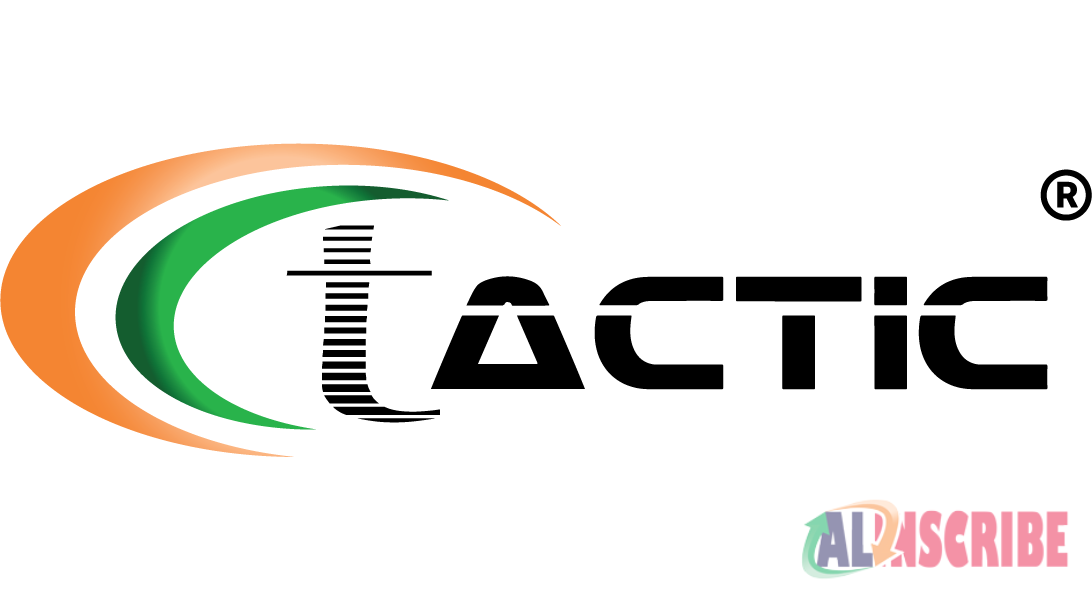
Tactic ERP & CRM Core Features
Just like ERPNext, Tactic ERP & CRM, too, covers almost every crucial feature, required for running a business smoothly, within its 7 core features. However, that’s not the best thing about Tactic, it is that Tactic is a SaaS and it’s incredibly flexible. The software can be tailored for small businesses as well as large corporations. These core features give an access to some of the most advanced modules in ERP history alongside a promise of enhancing your performance effectively. Let’s get to know about these core features in details.
Human Resource Management
As the very first core feature we have Human Resource Management. As we all know, HRM is a crucial addition to an ERP system, which allows the companies to manage their workforce digitally. Tactic ERP & CRM understands the need of a comprehensive HRM system and offers extensive and advanced HRM modules for the best possible results. The members module allows you to add for internal and external members, meaning you can add both permanent employees and outsourced temporary workers and provide them with only the needed permissions to work with. There are also modules like leave request management, Expense reports module, recruitment module to support that every task a company might associate with the course of HRM. Features like skills management and time tracking are also a part of this advanced HRM module offered by Tactic ERP & CRM.
Customer Relationship Management
Unlike most of the ERP systems, Tactic has in-built CRM features. And not only that it boasts strong and scalable CRM features to support most of the customer related tasks associated with a company. Tactic has an extensive third-party module that works in three ways. It allows you to add prospects, customers and vendors. You can also add representatives or contacts from each of the category for a smoother communication in needed times. There are also other crucial modules like Quotations or commercial proposal module, intervention, tickets, knowledge management and partnership management modules to make sure nothing is left off when it comes to customer relationship management.
Vendor Relationship Management
Viola! You can not only manage customers with Tactic ERP & CRM, but you can also manage your vendors effectively enough. Although the vendor relationship management features are rather simpler, with less available functionalities, there are still modules like vendor module, vendor commercial proposal module, reception and incoterm module. In this scenario, it should be stated that incoterms is a very rare feature in almost every ERP system, while Tactic offers it as an integrated module, which can be used easily as per the users’ wishes. Hence, Tactic ERP & CRM exactly what you need without knowing it yet.
Financial Management
The best thing about Tactic’s financial management is that it has both simplified and double entry accounting. While you can only use one at a time – it still offers a grate level of flexibility and an independence to choose from. And the accounting module is a compact one with all the needed features like general ledger, report and invoice binding, journals, and so on. There are also other features including customer invoicing, vendor invoicing, taxes, loans and donations, bank and cash management, margins, payment by debit and credit transfer – making sure to save both of your time and effort to invest in a third-party accounting software.
Product Management
The product management features offered by Tactic ERP & CRM are scalable, comprehensive and advanced. Tactic supports both product and services. However, the feature isn’t limited to this only. There are stocks module, supported by warehouse management and inventory management. The warehouse management module can be used for warehouse movements, bulk stock exchange, replenishment and so on. There are also other features like Product lots module, product variants, bills of material and manufacturing order module.
Project Management
The project management features associated with Tactic ERP & CRM are simple yet advanced. Projects and leads can be easily managed with the help of project and leads module. The users can add multiple tasks to one project and add participants to them, track their time, add budget and so on. Events and agendas can be added and managed as well. With a calendar view it’s even easier to track your events and agendas in an easier and uniform manner. The users are also allowed to manage their conferences or meetings within the same interface. There is also a resource module, making it easier to add and keep a track of organization’s resources.
Electronic Content management
With the help of electronic content management feature, you can easily manage your website content within Tactic. This is one of the most unique features offered by Tactic ERP & CRM and it makes content management an easy task even for non-technical individuals.
Miscellaneous features
The miscellaneous features of Tactic ERP & CRM are a lot to unfold. So, those will be listed underneath:
- Tags and Categories Module
- Multicurrency Module
- Bookmarks & Shortcuts Module
- Barcode Module
- Inter-modules Workflow Module
- Data Imports module
- Data Exports Module
- Poll, Survey or Vote Module
- Website Module
- Point Of Sale (TakePOS)
- Social Networks Module
- Notification Module
- Mass Emailing Module
- Email Collector Module
- Web services REST API Module
- Web service SOAP API Module
- LDAP Module
- Oauth Module
- External Site Module
- FTP module
- GeoIPMaxmind Module
- PayBox Module
- Paypal Module
- Stripe Module
- ClickToDial module
- One Click Printing
- Receipt printers Module
- Mailman and SPIP Module
- Scheduled jobs Module
Pros and Cons of Tactic ERP & CRM
| Pros | Cons |
|
|
ERPNext Vs. Tactic ERP & CRM
| Best Use For | ERPNext | Tactic ERP & CRM |
|---|---|---|
| Business Size | Startups, small, medium and large companies | Startups, small, medium and large companies - size is no bar for Tactic ERP & CRM |
| Business Type | ERPNext is the best for both B2B and B2C companies | Tactic is suitable for both B2B, B2C companies |
| Industries | Manufacturing, Distribution, Retail, Service Industries, Healthcare, Education, Non-profits and Financial Services are the industires that are the most benefitted by ERPNext. | Tactic is a suitable choice for every industry |
| Core Features | ERPNext | Tactic ERP & CRM |
| Human Resource Management (HRM) | ||
| Customer Relationship Management (CRM) | ||
| Vendor Relationship Management (VRM) | ||
| Financial Modules (Accounting/Treasury) | ||
| Product Management (PM) | ||
| Projects/Collaborative work Management | ||
| Electronic Content Management (ECM) | ||
| HRM Modules | ERPNext | Tactic ERP & CRM |
| User module | ||
| Members Module | ||
| Leave request management Module | ||
| Expense Reports Module | ||
| Recruitment Module | ||
| CRM Modules | ERPNext | Tactic ERP & CRM |
| Third Party module | ||
| Quotations Module | ||
| Sales Order Module | ||
| Shipment Module | ||
| Contract Module | ||
| Intervention Module | ||
| Tickets Module | ||
| Knowledge management Module | ||
| Partnership management Module | ||
| VRM Modules | ERPNext | Tactic ERP & CRM |
| Vendor Module | ||
| Vendor Commercial Proposal Module | ||
| Reception | ||
| Incoterms Module | ||
| Financial Modules | ERPNext | Tactic ERP & CRM |
| Customer Invoice Module | ||
| Vendor invoice module | ||
| Tax Module | ||
| Salaries Module | ||
| Loans Module | ||
| Donation Module | ||
| Bank and cash module | ||
| Payment by credit transfer Module | ||
| Payments by Direct Debit Module | ||
| Margin Module | ||
| Accounting simplified Module | ||
| Accounting double entry Module | ||
| Product Management (PM) | ERPNext | Tactic ERP & CRM |
| Product Module | ||
| Services Module | ||
| Stocks Module | ||
| Product Lots Module | ||
| Product Variants Module | ||
| Bills of Material Module | ||
| Manufacturing Order Module | ||
| Projects/Collaborative work Management | ERPNext | Tactic ERP & CRM |
| Projects or Leads Module | ||
| Events/Agenda Module | ||
| Resources Module | ||
| Event Organization | ||
| Electronic Content Management (ECM) | ERPNext | Tactic ERP & CRM |
| DMS/ECM Module | ||
| Miscellaneous Modules | ERPNext | Tactic ERP & CRM |
| Tags and Categories Module | ||
| Multicurrency Module | ||
| Bookmarks & Shortcuts Module | ||
| Barcode Module | ||
| Inter-modules Workflow Module | ||
| Data Imports module | ||
| Data Exports Module | ||
| Poll, Survey or Vote Module | ||
| Website Module | ||
| Point Of Sale (TakePOS) | ||
| Social Networks Module | ||
| Notification Module | ||
| Mass Emailing Module | ||
| Email Collector Module | ||
| Web services REST API Module | ||
| Web service SOAP API Module | ||
| LDAP Module | ||
| Oauth Module | ||
| External Site Module | ||
| FTP module | ||
| GeoIPMaxmind Module | ||
| PayBox Module | ||
| Paypal Module | ||
| Stripe Module | ||
| ClickToDial module | ||
| One Click Printing | ||
| Receipt printers Module | ||
| Mailman and SPIP Module | ||
| Scheduled jobs Module | ||
| Specifications | ERPNext | Tactic ERP & CRM |
| Deployment | ERPNext is available to be deployed as both on-premises software and cloud-based software. | Tactic is available as a SaaS and an on-premises software as well. And the best thing about is that the users do not have to opt for different versions of Tactic for that. |
| Supported Device | Any smart device with an internet connection | Any smart device with an internet connection |
| Supported Platforms | Any browser | Tactic can be accessed via any secure browser |
| Support and Training | ERPNext | Tactic ERP & CRM |
| Support | ERPNext offers user support via a dedicated support portal, documentation, knowledge sharing and more. | Tactic offers support through email, call, chat and a remote assistance |
| Training | ERPNext has a blend of structured courses, video tutorials, online learning platforms etc. However, some of these channels may be subject to paid support. | Tactic wiki, tutorial videos, One-on-one training are offered by Tactic |
| Security | ERPNext | Tactic ERP & CRM |
| Security Features | Server Monitoring and Proactive Alerts, Automated Security Patch Management, Role-Based Access Control and Authentication, Backup and Disaster Recovery Management, Data security and regular monitoring | Regular updates, 2FA (2 Factor Authentication), SSL (Encrypted Data Communication between client and server), Backups / Disaster Recovery, Database Security, Password Security, Staff Access, System Security, Physical Security, Credit Card Safety, Data Encryption, Network defense, DOS and Brute force rate Mitigation, Automatic Backups,PHP safe_mode, SQL injection protection, XSS injection protection (cross site scripting), SSRF protection, CSRF (Cross Site Request Forgery) protection, Centralized entry code to check permissions, Optional CAPTCHA in log-in page to restrict robots, Anti-virus check-up sessions on every uploaded file. |
| Framework | ERPNext | Tactic ERP & CRM |
| Programming Language | ERPNext primarily uses Python and JavaScript | Tactic ERP & CRM primarily uses PHP |
| Technology | ERPNext | Tactic ERP & CRM |
| Integration with E-commerce Platforms | ERPNext can be easily integrated with your e-commerce website and platform. | Tactic ERP & CRM can be integrated with E-commerce platforms via API very conveniently. |
| Integration with IoT Devices | ERPNext is promotes seamless integration with IoT devices. | Tactic ERP & CRM can be integrated with IoT devices. |
| Artificial Intelligence (AI) and Machine Learning (ML) Capabilities | ERPNext is known to actively integrating and utimizing AI and ML capabilities to enhance performance even more. | Tactic ERP & CRM is looking forward to establish AI/ML within the software in near future. |
| Low-Code/No-Code Development Platform | ERPNext is not a no-code, but certainly a low-code platform. Frappe framework allows the users to develop applications easily with minimal coding. However, prior programming knowledge is certainly required. | Tactic ERP & CRM doesn't require any kind of programming for minimal changes. The users can easily add, delete any parameters, attributes directly from the setup, which makes it a no-code platform. |
| Sustainability Tracking and Reporting | Available | Not Available |
| Compliance Management Features | Available | A wide range of Compliance Management Features are available in Tactic. |
| Risk Management Features | Financial Risk Management, Supplier Risk Management, Inventory Risk Control, Project Risk Assessment, General Risk Management Features etc. | The users are allowed to take back-up of their software data via admin access. Any other risk management is performed by the parent company. |
| Service Level Agreements (SLAs) for Cloud Offerings | ERPNext offers Service Level Agreements (SLAs) for Cloud Offerings | Tactic ERP & CRM offers Service Level Agreements (SLAs) for Cloud Offerings |
| User Roles and Permissions Management | ERPNext allows the users to add roles and responsibility to limit access | Tactic ERP & CRM allows the users to add roles and responsibility to limit access |
| Search Functionality | Search functionality is available | Search functionality is available |
| Collaboration Tools | Collaboration tools are available | Collaboration tools are available |
| Document Management Integration | Not Available | Document management integration is available. The users can add and manage their document tree within the software very easily |
| Pricing | ERPNext | Tactic ERP & CRM |
| Basic Plan | SERPNext is open source software, which means, it's free to use, modify and distribute. However, the cloud-based version of the software is paid. | $9/Month/User |
| SME Plan | Not Applicable | $19/Month/User |
| Enterprise Plan | Not Applicable | $27/Month/User |
| Free Trial | Available | Available |
| Freemium Version | Available | Available |
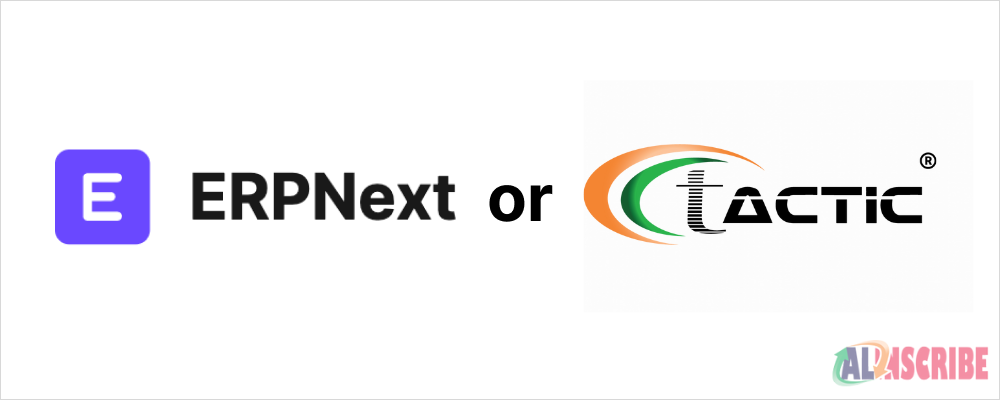
Analysis and conclusion
Both ERPNext and Tactic ERP & CRM are perfect matches for most of the types of industry. While ERPNext is known to be less suitable to large companies with a lot of requirements, Tactic ERP & CRM can be tailored to match the need of both big and small companies. Hence, if you own a big company, you might like Tactic more.
On the other hand, ERPNext is free of cost and for Tactic ERP & CRM you will still have to pay a miniscule price. So, companies with tighter budget may find ERPNext as a better choice. However, as a downside of being free, ERPNext’s support heavily relies on community and help from other users, while Tactic offers both free and paid support to customers.
To conclude the article, it can be stated that the choice depends on your requirements and need as both of the systems are best in what they claim to do.
Article Comments
Similar Articles
Articles Search
Sponsor
There are zero sub-categories in this parent category.
There are zero sub-categories in this parent category.
There are zero sub-categories in this parent category.








